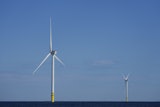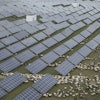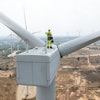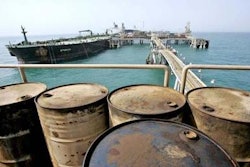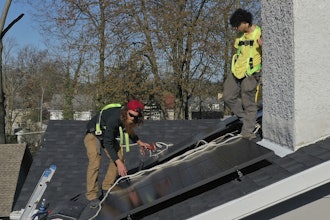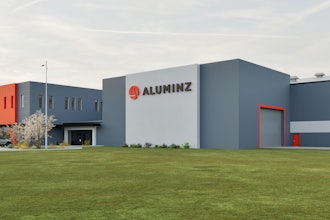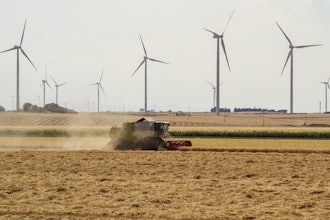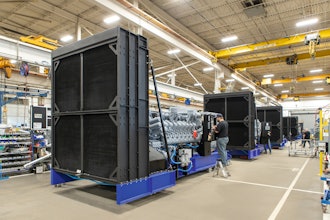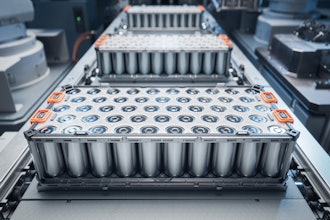Editor's note: This article originally appeared in the October 2015 issue of Food Manufacturing
Facility managers are always looking to increase their production while decreasing their annual energy bills. However, doing both at once can be a daunting task. Since loading docks are on the exterior of the building, and interface directly with potentially steamy (or frigid) outdoor environments, they are often the first areas targeted for energy efficiency upgrades. However, many interior sections of food manufacturing facilities are also significant contributors to energy waste and decreased productivity.
ALSO SEE: 14 Strategies to Save up to 70% in Energy Costs Using the Latest in Warehouse Lighting .. .and More
Here are three tips for boosting operational efficiency on the interior of your facility — and your bottom line, along with it.
Use faster-acting doors for cold storage areas
There’s a common misperception that choosing cold storage doors means making compromises between air temperature control, productivity and low energy costs. In reality, it doesn’t have to. Thanks to recent advances in door technology, facility managers can now have their (ice cream) cake and eat it, too.
Refrigerated spaces are designed to trap cold inside and keep heat and humidity out. Traditionally, they have used heavy, insulated, rigid doors with a high R-value. While it’s true that higher R-values mean less energy loss through door panels (conduction), there is a downside for high-traffic openings. These side-acting doors are typically slow-moving, resulting in longer door cycle times and higher rates of air infiltration. This not only wastes energy, it makes it harder to maintain temperature control inside the freezer. Furthermore, traditional hard-core doors are susceptible to forklift damage. Unless the damaged door is quickly fixed, there can be substantial energy losses as a result of poor sealing. Thus, for high-traffic openings, energy losses due to the door being open or sealing poorly (infiltration) can represent a significantly larger cost component than energy losses due to conduction.
Recent advances in door design have focused on improved bi-parting doors and insulated upward-acting doors. Advanced bi-parting door designs include high speeds to minimize door open time. Some doors can operate up to 100 inches per second, which is up to four times faster than old-style, rigid side-acting doors.
Additionally, new technically advanced freezer doors have the ability to withstand forklift impact, which minimizes maintenance and downtime while maintaining a tight seal over the life of the door. Torque sensing reversing capability is also available, which eliminates safety and maintenance concerns with doors that use pneumatic or electrical reversing edges for the same purpose.
The most advanced high-speed roll-up doors now use insulated door panels, as well. These insulated curtain panels provide a high enough R-value to avoid needing expensive panel defrost systems. As with bi-parting doors, newer upward-acting doors also incorporate a perimeter thermal air seal for added energy savings through a tighter seal.
Light, easy-to-use blast freezer walls
Blast freezers present another set of door challenges — and another opportunity for significant ROI in terms of energy usage and productivity. Used to process everything from TV dinners to fish to ice cream, blast freezers are growing in popularity, since their extremely cold temperatures induce very rapid freezing, which creates smaller ice crystals than conventional freezing does (and thus less damage to food). Once blast frozen, food can be moved to a more conventional freezer for storage, as long as the freezer stays cold enough to keep the food frozen.
Unfortunately the huge size of many blast freezers — combined with other issues like pressure and frost build-up — often makes their insulated panel doors very unwieldy. In some cases, these huge doors (which can be as a large as 25 feet by 25 feet) become so heavy and hard to open that employees have resorted to dangerous methods to open them, such as using a forklift, or have problems closing them, thus wasting energy.
Fortunately, a relatively new building technology — fabric curtain walls — has now been adapted to provide a light, safe and affordable thermal barrier alternative for blast freezer cells. Blast freezer curtain walls are made of insulated, sliding panels nested in a tubular steel frame. Each panel is constructed of 18-ounce, industrial vinyl fabric surrounding a layer of anti-microbial polyester batting.
Engineered to be light and easy to use, blast freezer curtain walls form a safe and affordable airflow and thermal barrier and can be operated by a single person. Their tight and effective seal redirects the chamber’s airflow, making it more efficient, reducing blast cycle times and lowering energy consumption.
Their seal also minimizes the build-up of ice on the floor at the base of the doors, reducing the chance of employee injuries from slips and falls. Additionally, blast freezer curtain walls require minimal long-term maintenance and are generally easier to install and less expensive than traditional doors used for these extreme applications.
Curtain walls can also help save energy in non-refrigerated areas of a food manufacturing facility. A fabric curtain wall can be used in place of a conventional wall in virtually any non-load-bearing application. They are available in both insulated and non-insulated varieties, these walls can be installed as stationary systems or sliding units and can be configured for almost any facility space or application.
Insulated curtain walls can maintain a temperature delta of up to 40 degrees Fahrenheit (22C) with R-values of up to 10. While commonly used in cold storage facilities to divide the existing “cold box” into temperature zones, they are routinely used to create treated air space in warehouses or manufacturing facilities to improve employee comfort or to control temperature and/or humidity levels to protect critical equipment and processes.
Combine with HVLS fans for more benefits
As space dividers, curtain walls work particularly well when paired with HVLS fans. HVLS fans mix air more efficiently and require less energy than conventional fans, generating an air cycle that allows for a more consistent temperature from floor to ceiling.
In addition to worker comfort, this will equate to significant energy savings. A single HVLS fan can reduce annual heating and cooling costs by as much as 20 to 30 percent, depending on the climate. When used in conjunction with conventional HVAC systems, HVLS fans are a high-value, cost-effective solution to increase air movement and improve overall environmental control. Fabric curtain walls can maximize the effectiveness of this entire environment control system, by segmenting off areas that require more extensively treated air from areas that don’t — further minimizing waste.
No need to choose between energy and efficiency
Facility managers don’t have to choose between boosting productivity and saving energy. By incorporating a synergistic combination of infrastructure upgrades — such as high-speed doors, fabric curtain walls, and HVLS fans — food manufacturing plants can simultaneously lower electricity and other energy costs, improve worker comfort and enhance efficiency.
The information herein is provided as a general reference regarding the use of the applicable product(s) in specific applications. This information is provided without warranty. It is your responsibility to ensure that you are using all mentioned products properly in your specific application and in accordance with all laws and regulations.
